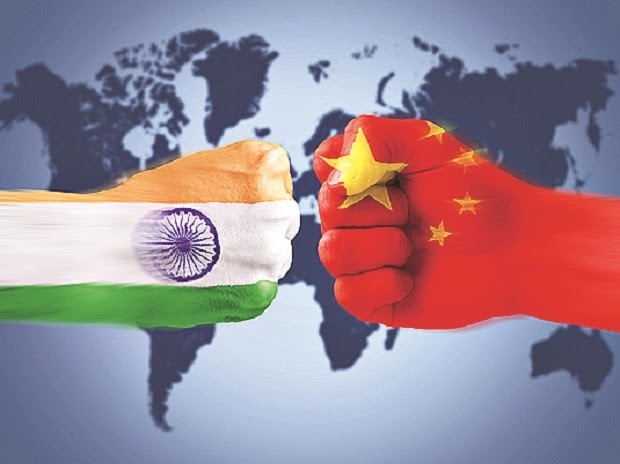
Hu Shisheng wrote on Weibo that there were four reasons for China’s attack in Galwan which killed 20 Indian soldiers and an unknown number of PLA soldiers.
By Vikas Gupta
Trading Standard, May 1, 2023
For the first time since June 2020, when the Galwan River Valley in eastern Ladakh witnessed a fierce clash between the Indian army and the People’s Liberation Army (PLA) of China, a senior analyst affiliated with the Chinese Communist Party (CCP) explained in detail that led to Chinese aggression.
This confrontation resulted in the deaths of 20 Indian soldiers and an unknown number of Chinese soldiers.
“In China’s view, the Galwan Valley incident is the inevitable result of India’s long-term violation of the 1993, 1996, and even 2005 and 2013 agreements,” Hu Shisheng wrote. , Director of the South Asia Institute of China Institutes of Contemporary International Studies. relationships (CICIR).
Hu Shisheng was commenting on the Chinese social media site, Weibo, on the visit to Delhi last week by Chinese Defense Minister Li Shangfu to attend the Shanghai Cooperation Organization (SCO) Defense Ministers’ Conclave. hosted by Indian Defense Minister Rajnath Singh. .
It was the first visit by the Chinese Defense Minister following the PLA’s border transgressions in Galwan and five other areas along the Line of Actual Control (LAC), with both sides referring to their de facto border.
Hu’s post on Weibo, translated by Indian analyst Aadil Brar, detailed four reasons why “China thinks India has violated border peace.” At least one of these reasons goes back too far in time, to 1999, to be entirely credible.
The first reason cited by Hu is India’s takeover of the Chumi Gyatse waterfalls in the Dongzhang region in 1999. Colloquially referred to as the “sacred waterfalls”, it is a group of 108 waterfalls on the Sino-Indian LAC near Yangtse, one of the hotly contested areas along the LAC.
Hu Shisheng’s second reason is more predictable: the amendment of the Indian Constitution by New Delhi in August 2019 to change the political status of Jammu and Kashmir (J&K). This involved revoking the special status that J&K enjoyed under Article 370 of the Indian Constitution. Additionally, J&K’s statehood had been withdrawn and the former state was divided into two centrally governed union territories: Ladakh and J&K.
The third reason cited by Hu is the new aggression shown by Indian military patrols since the beginning of 2020. Hu said these patrols were becoming unduly aggressive, “building bridges and roads and continuously extending the patrol route”.
In fact, Indian road construction units were constructing and improving border roads which provided and improved connectivity between places on the Indian side of the LAC such as the so called Darbuk – Shyok – Daulet Beg Oldi (DSDBO) road which linked the ‘India. northernmost posts at the foot of the Karakoram Pass.
The fourth and final reason given by Hu was that Prime Minister Narendra Modi had violated the 1988 agreement, reached in Beijing between Rajiv Gandhi and Deng Xiaoping, to put the border dispute on the back burner while developing other aspects of the relationship. . Hu alleged that Modi had hijacked the border issue by making it a central aspect of bilateral relations.
“As a result, it will be difficult for China-India relations to emerge from the sluggish state of the ‘three gaps’, i.e. lack of momentum, lack of normal cooperation and lack of mutual trust. strategic,” Hu Shisheng wrote. .
The territorial dispute between China and India can be divided into three sectors: The eastern sector in Arunachal Pradesh which covers 90,000 square kilometers; the central sector, near Nepal, which measures 3,000 square kilometres; and the western sector, in Ladakh, which measures 33,000 square kilometres.
Another US-based Chinese scholar, Yun Sun, had written shortly after the 2020 Galwan clash that the timing and nature of the Himalayan confrontation raised critical questions about China’s strategic calculations and tactical goals.
“Tactically, China wants to end the infrastructure arms race along the border, but strategically, it is in no rush to resolve disputes as it bogs down India as a continental power,” he said. wrote Yun.
Some outside observers might view China’s decision to oppose India as strategically unwise – it may seem unwise for Beijing to confront a large and important neighbor over barren mountains. But China believes its prestige requires standing up to India at any cost.
How Beijing weighs the pros and cons of its border policy will have implications for regional stability and geopolitical ties between China, India and the United States.
Contacted for comment, no response has been received from the government up to the time of publication.






